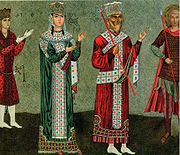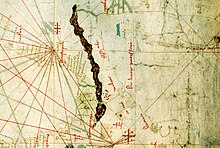Kingdom of Georgia
Kingdom of Georgia საქართველოს სამეფო Sakartvelos samepo | |||||||||||||||||||
|---|---|---|---|---|---|---|---|---|---|---|---|---|---|---|---|---|---|---|---|
| 1008–1490 | |||||||||||||||||||
 Kingdom of Georgia in 1124, at the peak of its power under David IV of Georgia | |||||||||||||||||||
| Status | Kingdom | ||||||||||||||||||
| Capital | Kutaisi (1008-1122) Tbilisi (1122-1490) | ||||||||||||||||||
| Common languages | Georgian | ||||||||||||||||||
| Religion | Orthodox Christianity | ||||||||||||||||||
| Government | Feudal Monarchy | ||||||||||||||||||
| King | |||||||||||||||||||
• 978-1014 | Bagrat III (first) | ||||||||||||||||||
• 1446-1465 | George VIII (last) | ||||||||||||||||||
| Historical era | High Middle Ages | ||||||||||||||||||
• Established | 1008 | ||||||||||||||||||
| 1238-1327 | |||||||||||||||||||
• Timurid Invasions | 1386-1403 | ||||||||||||||||||
• Collapse | 1490 | ||||||||||||||||||
| 1490-1493 | |||||||||||||||||||
| ISO 3166 code | GE | ||||||||||||||||||
| |||||||||||||||||||
| Today part of | Countries today
| ||||||||||||||||||
| Part of a series on the |
| History of Georgia |
|---|
 |
The Kingdom of Georgia (Georgian: საქართველოს სამეფო Sak’art’velos Samep’o) was a medieval monarchy established in 975 by Bagrat III. It flourished during the 11th and 12th centuries, the so-called "Golden Age" of the history of Georgia. It fell to the Mongol invasions of the 13th century, but managed to re-assert sovereignty by 1340s. Renewed Turco-Mongol incursions from 1386 led to the final collapse of the kingdom into anarchy by 1466 and the mutual recognition of its constituent kingdoms in Kartli, Kakheti and Imereti as independent states between 1490 and 1493.
Origins
The ascendancy of the Bagrationi dynasty can be traced to the 8th century, when they came to rule Tao-Klarjeti. The restoration of the Georgian kingship begins in AD 888, when Adarnase IV of Iberia took the title of "King of Georgians". The United Kingdom of Georgia was established in 1008. In this year Bagrat III, son of Gurgen II, became the ruler of the Kingdom of Western Georgia (Kingdom of Abkhazeti), including the Principalities of Imereti, Samegrelo, Abkhazeti (Abkhazia), Guria and Svaneti. Bagrat's mother was Queen Gurandukht, a daughter of George II of Abkhazia.
Golden age

The unified monarchy maintained its precarious independence from the Byzantine and Seljuk empires throughout the 11th century, and flourished under David IV the Builder (1089–1125), who repelled the Seljuk attacks and essentially completed the unification of Georgia with the re-conquest of Tbilisi in 1122.
With the decline of Byzantine power and the dissolution of the Great Seljuk Empire, Georgia became one of the pre-eminent nations of the Christian East, her pan-Caucasian empire[1] stretching, at its largest extent, from North Caucasus to northern Iran, and eastwards into Asia Minor. In spite of repeated incidents of dynastic strife, the kingdom continued to prosper during the reigns of Demetrios I (1125–1156), George III (1156–1184), and especially, his daughter Tamar (1184–1213). With the death of George III the main male line went extinct and the dynasty was continued by the marriage of Queen Tamar with the Alan Prince David Soslan of reputed Bagratid descent.[2]
Mongol rule
The invasions by the Khwarezmians in 1225 and the Mongols in 1236 terminated Georgia’s "golden age". The struggle against the Mongol rule created a diarchy, with an ambitious lateral branch of the Bagrationi dynasty holding sway over Imereti, western Georgia. Many powerful Armenian and Georgian families became independent of the Georgian King due to the Mongols' support. Georgians attended all major campaigns of the Ilkhanate and aristocrats' sons served in kheshig.[3]
In the year 1327 there occurred in Mongol Persia the most dramatic event of the reign of the Il-Khan Abu Sa'id, namely the disgrace and execution of Chupan, protégé of the Georgian king George. Chupan's son Mahmud, who commanded the Mongol garrison in Georgia, was arrested by his own troops and executed. Subsequently, Iqbalshah, son of Qutlughshah, was appointed to be Mongol governor of Georgia (Gurjistan).[4] In 1330–31 George V the Brilliant annexed Imereti uniting all of Georgia in the process. Therefore, four years prior the last effective Ilkhan Abu Sai'd's demise, two kingdoms of Georgia united again. In 1334, this post was given to Shaykh Hasan of the Jalayir by Abu Sai'd.[5]
Final disintegration
There was a period of reunion and revival under George V the Brilliant (1299–1302, 1314–1346), but the eight onslaughts of the Turco-Mongol conqueror Timur between 1386 and 1403 dealt a great blow to the Georgian kingdom. Its unity was finally shattered and, by 1490/91, the once powerful monarchy fragmented into three independent kingdoms – Kartli (central to eastern Georgia), Kakheti (eastern Georgia), and Imereti (western Georgia) – each led by the rival branches of the Bagrationi dynasty, and into five semi-independent principalities – Odishi, (Mingrelia), Guria, Abkhazia, Svaneti, and Samtskhe – dominated by their own feudal clans.



References
- ^ "Georgia". Encyclopædia Britannica Premium Service. Retrieved 2006-05-25.
- ^ According to Prince Vakhushti, David Soslan’s ancestry traced back to the Georgian refugeee prince David, a grandchild of George I of Georgia (1014–1027) and his Alan wife Alde.
- ^ C.P.Atwood- Encyclopedia of Mongolia and the Mongol Empire, p.197
- ^ D. M. Lang - Georgia in the Reign of Giorgi the Brilliant (1314-1346). Bulletin of the School of Oriental and African Studies, University of London, Vol. 17,No. 1 (1955), p.84
- ^ Ta'rfkh-i Shaikh Uwais (History of Shaikh Uwais), trans. and ed. J. B. van Loon, The Hague, 1954, 56-58.
See also
- Bagrationi dynasty
- List of Bagrationi rulers of Georgia
- List of Georgian Kings
- Principate of Iberia
- Kingdom of Abkhazia
- Kingdom of Imereti
- Kingdom of Kakheti
- Kingdom of Tao Klarjeti
- Kingdom of Kartli and Kakheti
- Line of succession to the Georgian throne
- Monarchism in Georgia

